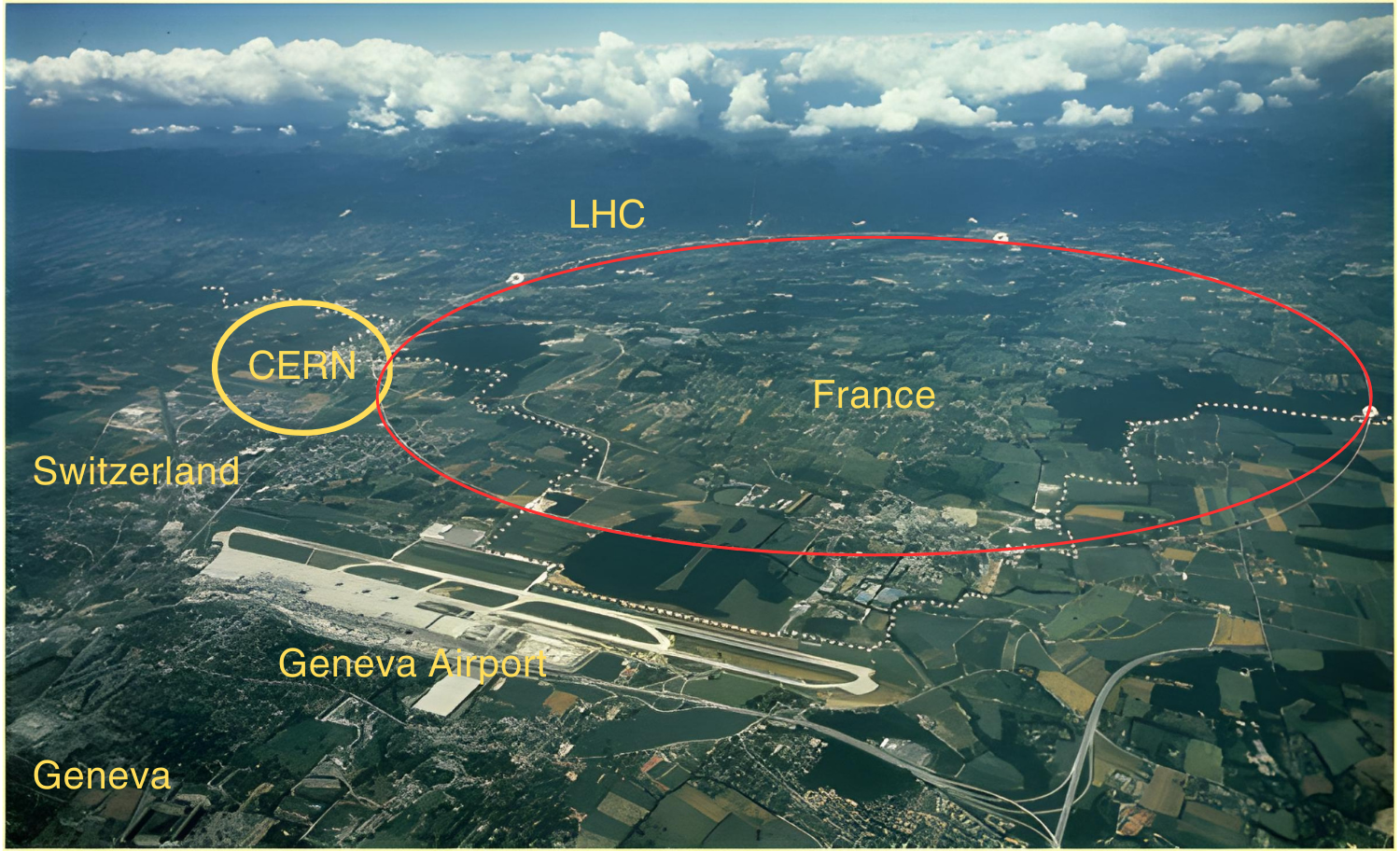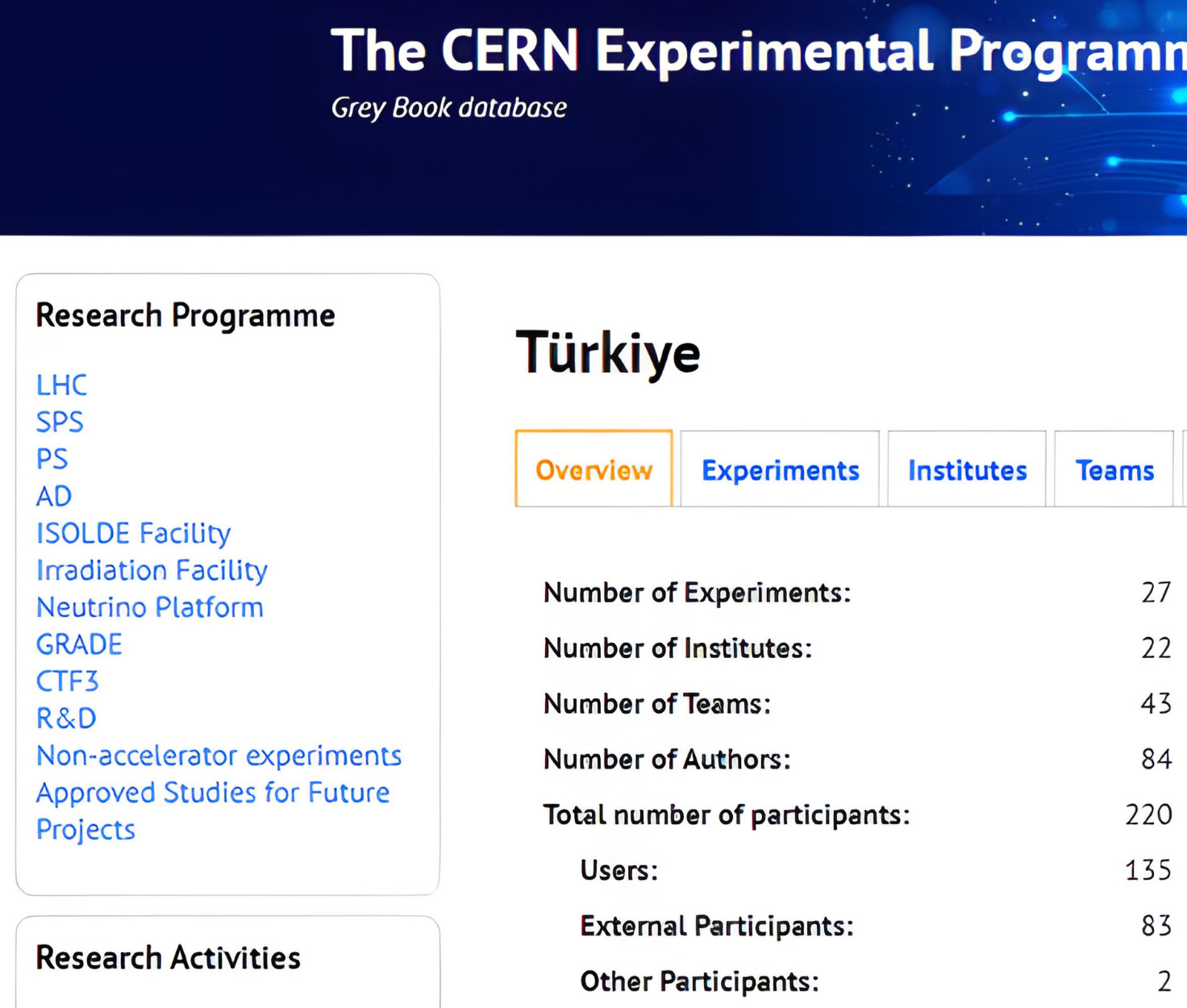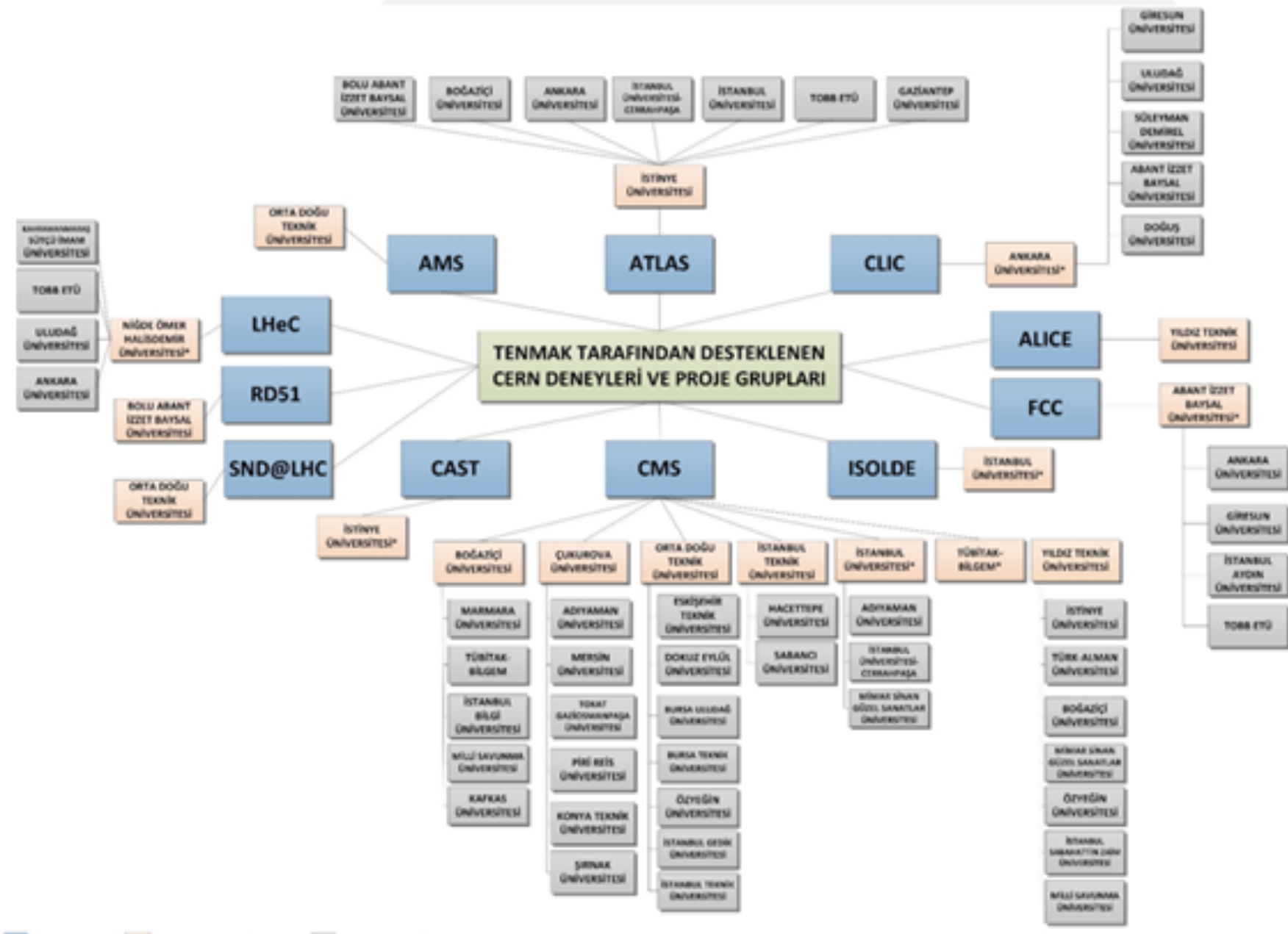CERN is the abbreviation of “Conseil Européen pour la Recherche Nucléair” which is French for European Council for Nuclear Research. CERN’s name was later changed to “Organization Européenne pour la Recherche Nucléaire” in French and “European Organization for Nuclear Research” in English, but the name CERN continued to be used. CERN is known as the European Center for Nuclear Research in Turkey. CERN is the world’s largest particle physics and accelerator center, which was established in 1954 on the Swiss-French border near Geneva, with the slogan “Science for Peace“, after World War II, when 12 European countries came together to compete with the USA and Japan in the field of science and technology (https://home.cern/). Countries can become members of CERN. As of 2024, 23 countries are full members of CERN, 3 countries are associate members aiming for full membership, 8 countries, including Turkey, are associate members, and 6 countries and organizations are observer members. Founding countries (1954): France, Switzerland, Germany, England, Belgium, Denmark, Yugoslavia (1961), Greece, Italy, Netherlands, Norway, Sweden. Later full members: Austria, Spain, Portugal, Finland, Poland, Czech Republic, Hungary, Bulgaria, Israel, Romania, Serbia. Associate Members Aiming for Full Membership: Estoya, Cyprus, Slovenia. Associate Members: Türkiye, Pakistan, India, Lithuania, Latvia, Ukraine, Croatia, Brazil. Observer Organizations and Countries: European Union, UNESCO, USA, Russian Federation, Japan, JINR. Approximately 13,000 researchers from 110 countries are involved in studies at CERN.
 |
| [Aerial view of CERN, Swiss-French Border (Geneva)] |
At CERN, where research is being carried out on the subject of electrons, positrons, protons, antiprotons, etc., with beam energies in the range of GeV, TeV, by accelerating and colliding charged particle beams and collecting and analyzing the resulting data through large-scale detectors, the formation and structure of the universe, the interactions of fundamental particles, the standard model and beyond, the mass gain mechanism, neutrino and boson research, supersymmetry, dark matter and dark energy.
Large-Scale Accelerators and Colliders Installed at CERN:
Synchro Cyclotron (SS, 1957), Proton Cyclotron (PS, 1959), Proton Collider (ISR, 1971), Super Proton Synchrotron (SPS, 1976), Super Proton-Antiproton Synchrotron (SppS, 1981), Large Electron-Proton Collider ( LEP, 1981), Large Hadron Collider (LHC, 2009). At CERN, work on four important large-scale collider projects is also continuing at great speed. These are the high luminosity LHC (HL-LHC) project, which is expected to be completed in 2026 and aims to increase the luminosity (proton collision density) of the existing LHC collider by 10 times (reaching 1035 collisions per square centimeter per second), and the LHC proton beam will be made tangent to the LHC, the Large Hadron-electron Collider (LHeC) project, which envisages colliding with a high-energy electron beam coming from an electron accelerator, the Compact Linear Collider (CLIC) project, which is planned as an electron-positron collider with TeV energy, and the circular project, which is planned to have a circumference of 100 km and a total collision energy of 100 TeV, the proton-proton collider is the Future Circular Collider (FCC). It is planned that these four giant colliders will be implemented at CERN, respectively, and the research to be carried out in these colliders will continue until the end of the 21st century.
Nobel Prizes in Physics Won for Discoveries Made at CERN: Discovery of the J/Psi Particle (S. Ting, 1976 Nobel Prize in Physics), Discovery of W, Z Bosons (C. Rubia, V. der Meer, 1984 Nobel Prize in Physics), Discovery of the Muon Neutrino (J. Steinberger, 1988 Nobel Prize in Physics), Discovery of the Multichannel Detector Chamber (G. Charpak, 1992 Nobel Prize in Physics), Discovery of the Higgs Boson (P. Higgs, F. Englert, 2013 Nobel Prize in Physics).
Technologies Developed at CERN: Discovery of the World Wide Web (www) (1989), Hadron (proton) Therapy, Computed Tomography (CT), PET-scan, Magnetic Resonance (MR), Touch Screen Technology, Medical and Industrial Isotopes, Solar Energy Panels (Solar Panels), Ultra High Vacuum Technology, Halogen Free Cable, High Current Superconductors, Cryogenic Valves, Undamaged Metal Scanners-X-Ray Machines, Special Pressure Vessels and Palladium Film Coatings.
Click for the CERN Science Gateway (2023) video.
Click for the CERN Large Hadron Collider (LHC) video.
Türkiye-CERN RELATIONS
Türkiye became a member of CERN with Observer Country status in 1961. Turkish scientists took part in the CHARM II, CHORUS and SMC experiments carried out at CERN with the support of TÜBİTAK in the 70s, 80s and 90s. Since the early 1990s, research groups from METU, Boğaziçi, Çukurova and Ankara Universities have participated in the ATLAS and CMS experiments, which are the high-energy proton-proton collider (Large Hadron Collider (LHC)) experiments planned to be established at CERN. In 2005, the Prime Ministry gave the task of coordinating relations with CERN to TAEK (TENMAK from 2020). In this context, TAEK signed a cooperation agreement with CERN on April 14, 2008, in line with the recommendations of the CERN Science Committee it formed. In a letter written by TAEK to the CERN Council on January 27, 2009, it was announced that Turkey would apply for membership to CERN, and subsequently, the government’s letter of determination was forwarded to the CERN Council through the Ministry of Foreign Affairs in March 2009. In the same period, the country report prepared by TAEK under the title “Country Report of Republic of Turkey for CERN Membership” was presented to the CERN Council in 2009. CERN Council evaluated Turkey’s membership application at its meeting held on 16-17 December 2010, and with the decision taken at the same meeting of the council, it established associate membership in order to expand CERN’s sphere of influence, and in accordance with the rule, Turkey had to become an associate member first. Following the studies and evaluations made as a result of the new joint membership application made in 2012, the joint membership agreement between CERN and Turkey was signed by the Republic of Turkey’s Minister of Energy Taner Yıldız and CERN Director Prof. Dr. Rolf Heuer, at CERN on 12 May 2014.
 |
| [Turkey’s CERN Joint Membership Agreement with T.R. Minister of Energy Taner YILDIZ and CERN Director Prof. Dr. Signed by Rolf HEUER. (12.05.2014)] |
The government letter containing the declaration regarding the “Agreement between the Republic of Turkey and the European Organization for Nuclear Research (CERN) on the Granting of Associate Member Status at CERN“, which was signed at CERN and approved by Law No. 6587 dated 22 January 2015, was approved by the CERN Council on 06 May 2015. With the processing, Turkey’s Associate Membership to CERN has been realized.
Main Provisions and Opportunities of Associate Membership to CERN:
With the agreement, Türkiye became an associate member of CERN. The agreement is valid for 5 years and can be extended at the request of the parties. With the agreement, Turkey started to pay joint membership fees of approximately 5 Million Swiss Francs to CERN annually, and this amount is one tenth of the full membership fee. With the agreement, Türkiye began to be represented in the CERN Science and Finance Committees as well as the CERN Council. With the agreement, Turkish business professionals were given the opportunity to work at CERN, our students had internship and training opportunities, and most importantly, Turkish companies were given the opportunity to participate in CERN tenders. Turkey’s relations with CERN are coordinated by the Turkish Energy, Nuclear and Mining Research Council (TENMAK) (https://www.tenmak.gov.tr). Immediately after the agreement, CERN Industrial Liaison Office (ILO) was opened in June 2015, in cooperation with TENMAK-TOBB, in order to establish and coordinate the relationship of Turkish companies with CERN tenders. Representation of Turkish industry and industry in the CERN Council and CERN Committees is carried out by TOBB-CERN Industrial Liaison Office.
Turkey’s Presence in CERN’s Experimental Program and CERN Projects Supported by TENMAK:
Turkey is currently involved in 27 projects with 43 research teams from 22 Universities/Institutes at CERN, and the number of scientists and graduate students registered in studies at CERN is 220. (Source: https://greybook.cern.ch/country/detail?id=TR).
 |
| [Turkey’s Presence in CERN’s Experimental Program (May 2024)] |
CERN projects supported by TENMAK are ATLAS, CLIC, ALICE, FCC, ISOLDE, CMS, CAST, SND@LHC, RD51 and LHeC. The distribution of the universities that coordinate and take part in these projects is given below.
 |
| [CERN Projects Supported by TENMAK (Source: TENMAK)] |
